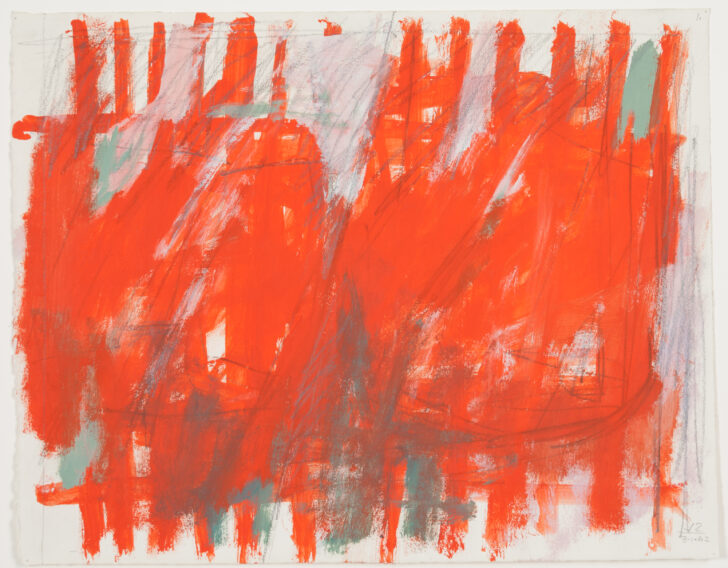Small Red
Jack Tworkov

Description
Born in Biala, Poland, in 1900, Jack Tworkov came to the United States at the age of thirteen. After studies at Columbia University, the National Academy of Design, and the Art Students League, Tworkov worked during the Depression first with the Public Works of Art Project and then with the WPA. While with the WPA, Tworkov met Willem de Kooning, who was also working for the program, and the two became part of the founding generation of New York School artists.
Tworkov's early figures, landscapes, and still lifes demonstrate the influence of the progressive nineteenth-century artist Paul Cézanne (1839–1906). Tworkov's experiments with Cubism led gradually to gestural abstraction. A major influence for Tworkov was the Surrealists' notion of automatic creation (tapping the unconscious and placing images onto paper or canvas without the interference of the conscious mind). During the 1950s, Tworkov's previously recognizable subjects gradually become subsumed by his expressive brushstrokes.
Untitled of 1972 is a perfect example of one of Tworkov's automatic creations, full of energy and vitality. Despite the feeling of randomness, there exists in each of his works an underlying sense of order. Even and regular strokes are readily apparent, and although the surface is restless, it remains controlled and restrained.
Sean M. Ulmer, University Curator of Modern and Contemporary Art, on the occasion of the exhibition The New York School: Abstract Expressionism and Beyond, July 20, 2002 – January 19, 2003
Gallery Rotation Fall 2011
Jack Tworkov
United States, 1900–1982
Untitled
1962
Gouache and graphite on paper
Gift of Herbert Barrows, 2000/2.264
After emigrating from Poland as teenager, Jack Tworkov studied at Columbia University and the Arts Students League in New York. While working as an artist for the federally-funded Works Progress Administration during the Depression, he met painter Willem de Kooning and, along with other Abstract Expressionist painters, they went on to found the loosely affiliated group of artists known as the New York School. These painters, which included Jackson Pollack, emphasized a direct and gestural approach to making art (in which the artist’s physical and emotional interaction with the canvas is recorded in paint) that flourished in the United States during the postwar period. By the early 1960s, Tworkov began to move away from the spontaneous, rhythmic compositions of his earlier work, feeling the Abstract Expressionist style had become creatively exhausted. He turned instead to a more linear, geometric, and minimalist approach. This untitled drawing is representative of a transitional moment in Tworkov’s career: a more rigid grid is evident but his gestural brushstrokes are still present.
Physical Description:
This is an abstract drawing with a large field of red and some green areas against a cream colored background. There are two groupings of vertical red lines partially covered by thick red strokes that create two round forms. Around the red area are black pencil strokes.
Usage Rights:
If you are interested in using an image for a publication, please visit https://umma.umich.edu/request-image/ for more information and to fill out the online Image Rights and Reproductions Request Form.